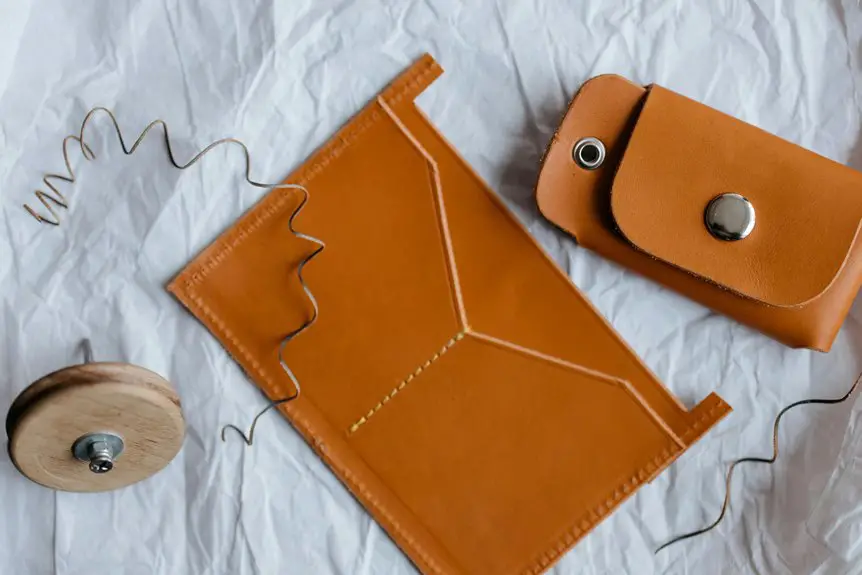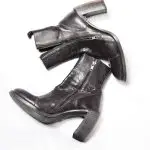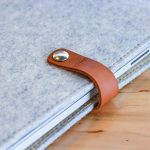To make a padded fabric case for your Nintendo Switch, start by choosing a durable outer fabric like canvas and a soft lining such as fleece. Measure your Switch carefully, including controllers, then cut fabric and medium-weight padding to size. Sew the layers together with strong thread, leaving an opening to turn the case right side out. Add a secure zipper or Velcro closure. You’ll want to reinforce stress points and finish edges neatly for lasting protection. Keep going to find detailed tips and tricks.
Table of Contents
Key Takeaways
- Measure the Nintendo Switch carefully, including Joy-Cons, to ensure a snug fit for the fabric case.
- Choose durable outer fabric like canvas and soft lining such as fleece to protect against scratches and wear.
- Cut medium-weight padding slightly smaller than fabric pieces for effective cushioning without seam bulk.
- Sew outer fabric and padded lining with strong stitches, leaving an opening to turn the case right side out.
- Add a secure closure like Velcro or zipper, reinforce stress points, and finish edges neatly for durability and style.
Materials Needed for the Project
To sew a padded fabric case for your Nintendo Switch, you’ll need a few essential materials.
First, grab a sturdy outer fabric like canvas or denim to protect against scratches. You’ll also want a soft lining fabric, such as cotton or fleece, to keep your device safe inside.
Choose a tough outer fabric plus a soft lining to protect your Nintendo Switch inside and out.
For padding, pick a medium-weight batting to cushion your Switch without adding bulk. Don’t forget matching thread that’s strong enough for repeated use.
You’ll need a sewing needle or a sewing machine, depending on your preference. Scissors, pins, and a measuring tape will help you cut and hold pieces accurately.
Finally, a zipper or Velcro strip will keep the case securely closed.
With these materials ready, you’re set to create a durable, protective case tailored to your Switch.
Choosing the Right Fabric and Padding
When selecting fabric and padding for your Nintendo Switch case, consider both protection and style to guarantee your device stays safe while looking great.
You’ll want a durable outer fabric that’s resistant to wear and tear, like canvas or denim. For the lining, choose something soft to prevent scratches, such as fleece or microfiber. The padding is essential—it cushions your Switch against bumps and drops.
Keep these tips in mind:
- Use medium-thickness foam or quilt batting for effective shock absorption.
- Pick a fabric pattern or color that matches your personality or gaming setup.
- Confirm all materials are lightweight to keep the case portable and easy to carry.
Balancing these factors will help you create a case that’s both functional and visually appealing.
Measuring Your Nintendo Switch
Before you start cutting fabric, measure your Nintendo Switch carefully to note its length, width, and thickness.
Don’t forget to add extra space for padding to keep your device safe and cushioned.
Also, consider measuring any accessories you’ll want to carry in the case, like chargers or earbuds.
Dimensions to Record
Start by measuring your Nintendo Switch carefully to guarantee the case fits perfectly. Focus on recording the essential dimensions that will shape your sewing project.
You’ll want to note:
- The overall length from top to bottom, including any protruding buttons or ports.
- The width across the widest point, usually including the Joy-Con controllers.
- The thickness, measured at the thickest section to accommodate the device comfortably.
Use a flexible measuring tape or ruler for accuracy. Write these numbers down clearly; they’ll guide your fabric cutting and padding decisions.
Getting these measurements right now saves you from adjusting the case later, ensuring a snug, protective fit tailored to your Switch.
Don’t forget to double-check each dimension before moving forward with your sewing steps.
Allowance for Padding
Adding an extra half-inch to each dimension of your Nintendo Switch guarantees your padded case will have enough room to protect the device without feeling too tight.
This allowance accounts for the thickness of the padding material and the fabric layers, ensuring the Switch fits comfortably without strain. When measuring, add 0.5 inches to the height, width, and depth you previously recorded.
Remember, too little padding leaves your device vulnerable, while too much can make the case bulky. Aim for a balance that provides cushioning without excess bulk.
Once you factor in this padding allowance, you’ll have accurate measurements to cut your fabric and batting. This step is essential for crafting a snug, protective case tailored to your Switch’s exact size.
Measuring Accessories Space
While measuring your Nintendo Switch is essential for the main compartment, you’ll also want to account for any accessories you plan to carry. Accessories like chargers, earphones, and game cartridges need their own space to avoid damage and keep your case organized.
Start by measuring each item’s dimensions, then add a little extra room for ease of access. Consider these common accessories:
- Charger and USB cable: measure length and width when coiled or folded.
- Earphones or earbuds: account for their case or pouch size.
- Game cartridge case: note its thickness and overall dimensions.
Adding accessory space guarantees your case stays practical and protective without becoming bulky.
Be certain to sketch your design with these measurements before cutting your fabric.
Cutting Fabric Pieces Accurately
To cut your fabric pieces accurately, start by choosing the right measurement tools like a clear ruler and fabric chalk.
Mark your fabric precisely to guarantee each piece matches your Nintendo Switch’s dimensions.
Use sharp scissors or a rotary cutter and steady hands to follow your markings cleanly.
Choosing Measurement Tools
Accurate measurements are essential when cutting fabric pieces for your Nintendo Switch case, and selecting the right tools makes all the difference.
Using precise measurement tools guarantees your pieces fit perfectly, avoiding waste and frustration. Here are the best tools to take into account:
- Transparent ruler or quilting ruler: Offers clear visibility and straight edges for exact measurements.
- Measuring tape: Flexible for measuring curves or thicker materials like padding.
- Rotary cutter and cutting mat: Though primarily for cutting, the mat’s grid lines help verify measurements before cutting.
Choose tools that feel comfortable and suit your sewing style.
Having reliable measurement tools lets you cut fabric pieces confidently and accurately, setting a solid foundation for your project.
Marking Fabric Precisely
Because precise markings guide your cuts, you’ll want to use sharp, visible tools that won’t shift on the fabric. Grab a fine-tip fabric marker or tailor’s chalk in a contrasting color to your material.
Lay your fabric flat on a clean surface, smoothing out wrinkles before starting. Use a clear ruler or measuring tape to double-check dimensions, then mark all edges and seam allowances carefully.
Pin your pattern pieces firmly to the fabric to prevent movement while marking. Avoid using pens that bleed or pencils that smudge easily. Mark only what you need, focusing on accuracy rather than excess lines.
With these exact markings, your fabric pieces will align perfectly, making sewing your Nintendo Switch case much smoother and more professional.
Cutting Techniques and Tips
When you start cutting your fabric pieces, sharp scissors or a rotary cutter will make a world of difference in achieving clean edges. Dull tools can cause jagged cuts and frayed fabric, making your case look less professional.
To cut accurately, follow these tips:
- Use a cutting mat with a rotary cutter for straight, precise lines.
- Pin the fabric layers together securely to prevent shifting.
- Cut slowly and steadily, following your marked lines exactly.
Taking your time with these steps guarantees your pieces fit perfectly during sewing.
Preparing the Padding for Cushioning
Start by selecting the right type of padding to guarantee your Nintendo Switch case offers maximum protection. You’ll want a material that’s lightweight yet shock-absorbent. Measure and cut your padding slightly smaller than your fabric pieces to avoid bulk in seams. Lay the padding flat and smooth out any wrinkles before attaching it to your fabric. Here’s a quick comparison of common padding options:
| Padding Type | Thickness | Protection Level |
|---|---|---|
| Foam | Medium | High |
| Batting | Thin | Medium |
| Quilting Cotton | Thin | Low |
| Felt | Medium | Medium |
Choose the one that fits your protection needs and case design. Proper preparation guarantees your Switch stays safe during every adventure.
Sewing the Main Body of the Case
Grab your fabric pieces and padding, then align them carefully to begin sewing the main body of your Nintendo Switch case. Start by placing the outer fabric and the padded lining right sides together, matching edges precisely. Pin them to hold everything in place and guarantee smooth stitching.
As you sew, keep these tips in mind:
- Use a sturdy stitch like a straight stitch or a zigzag for durability.
- Leave an opening on one side to turn the case right side out.
- Trim corners and excess fabric to reduce bulk.
After stitching, turn the case inside out through the opening. Press the seams flat for a clean finish. This forms the protective, cushioned shell for your Switch.
Adding a Secure Closure Mechanism
With the main body of your Nintendo Switch case neatly assembled and pressed, it’s time to focus on keeping your device secure inside.
Start by choosing a closure type that suits your style and functionality needs—Velcro strips, magnetic snaps, or a zipper are popular options.
For Velcro, sew one side to the flap and the matching piece to the body, ensuring they align perfectly when closed.
If you prefer a zipper, carefully pin it along the edge opening, then stitch slowly for an even finish.
Magnetic snaps require attaching metal components firmly to both the flap and body, so double-check placement before sewing.
Whichever closure you pick, test it several times to make sure it holds your Switch snugly without adding bulk or wear.
Finishing Touches and Reinforcements
Although your case is nearly complete, adding finishing touches and reinforcements will confirm it stands up to daily use and protects your Nintendo Switch effectively.
Start by reinforcing stress points like corners and seams with extra stitching to prevent wear and tear. Then, consider adding a fabric lining or interfacing inside for added durability and a polished look.
Finally, top off your project with neat edge finishes such as bias tape or double-fold hems to keep everything secure and looking professional.
- Reinforce corners and seams with extra stitches
- Add a soft lining or interfacing for durability
- Finish edges with bias tape or double-fold hems
These steps confirm your case not only looks great but also lasts through countless gaming adventures.
Caring for Your Handmade Switch Case
Now that you’ve reinforced and finished your Switch case, keeping it in good shape will guarantee it stays protective and attractive.
First, avoid exposing the case to excessive moisture or direct sunlight, which can weaken fabric and fade colors. Spot clean minor stains promptly using a mild detergent and a soft cloth.
For deeper cleaning, hand wash the case gently in cool water and air dry it flat to maintain its shape. Refrain from machine washing or drying, as that may damage padding or seams.
Store your case in a dry, dust-free area when not in use. Regularly check for loose threads or worn spots and repair them quickly to extend your case’s lifespan.
With proper care, your handmade Switch case will keep your console safe and stylish.
Frequently Asked Questions
Can This Case Fit Other Gaming Consoles Besides the Nintendo Switch?
You might find this padded fabric case fits other gaming consoles if their dimensions are similar to the Nintendo Switch. However, you’ll want to measure your device first to guarantee a snug, protective fit before sewing.
How Can I Personalize the Case With Designs or Patches?
You can personalize your case by sewing on patches, embroidery, or fabric paint designs. Use iron-on transfers or appliqués for easy customization. Don’t forget to add your favorite colors or gamer logos to make it unique!
Is It Possible to Add Compartments for Game Cartridges?
Yes, you can definitely add compartments for game cartridges. Just sew small, padded pockets inside the case, ensuring they’re snug to keep cartridges secure but easy to access whenever you want to swap games on the go.
What Sewing Machine Settings Work Best for Thick Padding?
Think of your sewing machine as a sturdy bridge—set the needle to a heavy-duty size, use a longer stitch length, and slow the speed. This guarantees it pierces thick padding smoothly without snagging or breaking threads.
How Long Does It Typically Take to Complete the Case?
You’ll typically spend about 2 to 3 hours completing the case, depending on your sewing speed and experience. Taking your time with padding and stitching guarantees a sturdy, well-crafted result you’ll be proud of.
- What Is Pochampally Ikat? a Journey to India’s Silk City - June 27, 2025
- What Is Pochampally Ikat? a Journey to India’s Silk City - June 27, 2025
- What Is Pochampally Ikat? a Journey to India’s Silk City - June 27, 2025







